
Saint Paul is the capital of the U.S. state of Minnesota and the county seat of Ramsey County. Situated on high bluffs overlooking a bend in the Mississippi River, Saint Paul is a regional business hub and the center of Minnesota's government. The Minnesota State Capitol and the state government offices all sit on a hill close to the city's downtown district. One of the oldest cities in Minnesota, Saint Paul has several historic neighborhoods and landmarks, such as the Summit Avenue Neighborhood, the James J. Hill House, and the Cathedral of Saint Paul. Like the adjacent city of Minneapolis, Saint Paul is known for its cold, snowy winters and humid summers.

Alexander Ramsey was an American politician. He served as a Whig and Republican over a variety of offices between the 1840s and the 1880s. He was the first Minnesota Territorial Governor.

Joseph Alfred Arner Burnquist was an American attorney and Republican politician in Minnesota. He served in the Minnesota State Legislature from 1909 to 1911, was elected the 20th Lieutenant Governor of Minnesota in 1912, and then served as the 19th Governor of Minnesota from December 30, 1915, to January 5, 1921. He became governor after the death of Governor Winfield Scott Hammond (1863–1915).

The Minnesota Historical Society (MNHS) is a nonprofit educational and cultural institution dedicated to preserving the history of the U.S. state of Minnesota. It was founded by the territorial legislature in 1849, almost a decade before statehood. The Society is named in the Minnesota Constitution. It is headquartered in the Minnesota History Center in downtown Saint Paul.

Edmund Rice was an American politician. Rice served in the U.S. Congress in Minnesota's 4th District from March 4, 1887, to March 3, 1889.
John J. McDonough was an American lawyer and Democratic politician who served as Mayor of Saint Paul, Minnesota, from 1940 to 1948.
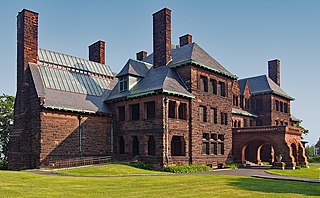
The James J. Hill House in Saint Paul, Minnesota, United States, was built by railroad magnate James J. Hill. The house, completed in 1891, is near the eastern end of Summit Avenue near the Cathedral of Saint Paul. The house, for its time, was very large and was the "showcase of St. Paul" until James J. Hill's death in 1916. It is listed as a U.S. National Historic Landmark, operated by the Minnesota Historical Society. It is also a contributing property to the Historic Hill District.

Nininger is a ghost town in section 18 of Nininger Township in Dakota County, Minnesota, United States.

Clarence Wesley "Cap" Wigington (1883-1967) was an American architect who grew up in Omaha, Nebraska. After winning three first prizes in charcoal, pencil, and pen and ink at an art competition during the Trans-Mississippi Exposition in 1899, Wigington went on to become a renowned architect across the Midwestern United States, at a time when African-American architects were few. Wigington was the nation's first black municipal architect, serving 34 years as senior designer for the City of Saint Paul, Minnesota's architectural office when the city had an ambitious building program. Sixty of his buildings still stand in St. Paul, with several recognized on the National Register of Historic Places. Wigington's architectural legacy is one of the most significant bodies of work by an African-American architect.

The Saint Paul City Hall and Ramsey County Courthouse, located at 15 Kellogg Boulevard West in Saint Paul, Ramsey County, in the U.S. state of Minnesota is a twenty-story Art Deco skyscraper completed in 1932. Built during the Great Depression era of high unemployment and falling prices, the four million dollar budget for the building was underspent, and the quality of materials and craftsmanship were higher than initially envisioned. The exterior consists of smooth Indiana limestone in the Art Deco style known as "American Perpendicular", designed by Thomas Ellerbe & Company of Saint Paul and Holabird & Root of Chicago and inspired by Finnish architect, Eliel Saarinen. The vertical rows of windows are linked by plain, flat, black spandrels. Above the Fourth Street entrance and flanking the Kellogg Boulevard entrance are relief sculptures carved by Lee Lawrie.

The Burbank–Livingston–Griggs House is the second-oldest house on Summit Avenue in Saint Paul, Minnesota, United States. It was designed in Italianate style by architect Otis L. Wheelock of Chicago and built from 1862 to 1863. The work was commissioned by James C. Burbank, a wealthy owner of the Minnesota Stage Company. Later, four significant local architects left their mark on the landmark structure.
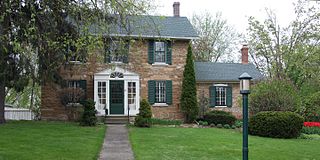
The Frederick Spangenberg House is a historic house in Saint Paul, Minnesota, United States. It was built from 1864 to 1867 as the residence of a farm in what was then rural land outside the urban center. The house was listed on the National Register of Historic Places in 1976 for having local significance in the theme of architecture. Now enveloped by a 20th-century residential neighborhood, it was nominated for being one of the oldest limestone farmhouses preserved in Saint Paul.
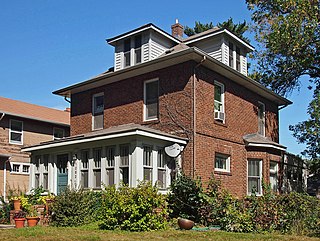
The Casiville Bullard House is a historic house in Saint Paul, Minnesota, United States. It was built from 1909 to 1910 by stonemason and bricklayer Casiville Bullard (1873–1959), one of the few known African-American skilled workers active in the building trades in early-20th-century Saint Paul. The house was listed on the National Register of Historic Places in 1997 for its local significance in the themes of black history and social history.

The Commerce Building is a 12-story office building in downtown Saint Paul, Minnesota, United States, built in 1912. It served as headquarters for two commerce associations from 1912 to 1921. It is now a mixed-use commercial, office, and residential building. It was listed on the National Register of Historic Places in 2007 for its local significance in the theme of commerce. It was nominated for its association with the business networking organizations that influenced Saint Paul's late-19th and early-20th-century economic and civic growth.
David Olmsted was the fourth mayor of St. Paul, Minnesota and first president of the Minnesota Territorial Council. He was a Democrat.

Thomas Reed Potts was an American physician, civic leader and the first Mayor of St. Paul, Minnesota. After graduating from medical school, Potts moved across the country and eventually found his way to the young settlement of St. Paul. Active in civic life and popular in his medical practice, he was elected as the first President of the Town Board. Despite a successful tenure, he tired of politics and retired after one term to continue his practice; however he did hold several key health-related positions. By the time of his death, he was the oldest doctor in the city and one of its most respected.
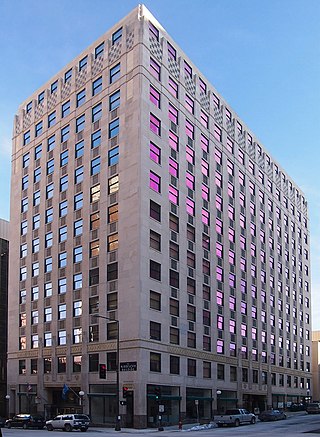
The Minnesota Building is a historic office building in Saint Paul, Minnesota, United States. The structure was placed on the National Register of Historic Places (NRHP) on June 10, 2009. The building was noted for its design, which was a harbinger for the transition from Classical architecture to the Art Deco/Moderne among commercial buildings in downtown Saint Paul; originally designed in a conservative style, the building became more Moderne as it was being built.
Justus Cornelius Ramsey was an American businessman and politician.

27 Crocus Place, also known as the J.M. Carlson House, was a 1902 Queen Anne style timber-frame house in Saint Paul in the U.S. state of Minnesota. It was a contributing property to the Historic Hill District.
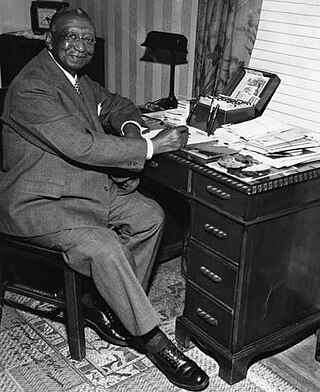
Frank L. Boyd was an American labor organizer and local leader of the Brotherhood of Sleeping Car Porters from 1926 to 1951 in Minnesota. He was the first African American person in Minnesota to be an elector for the Minnesota Democratic-Farmer-Labor party and also one of the first two African American electors in the history of the Democratic Party.






















